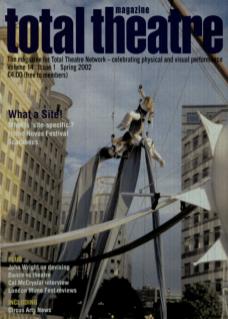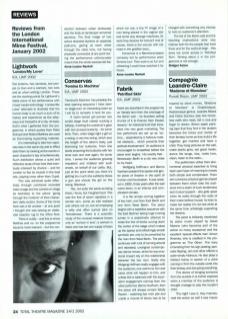Fabrik are described in the programme as ‘literally born from the wreckage of the Berlin wall – its founders selling chunks of it to finance their theatre dreams’. A historical truth that translates into very good marketing. The two performers are set up as ‘victims... separated by a hideous material obstacle... which prevents their spiritual development'. An audience is encouraged to empathise before the piece even begins. I do exactly that – ferociously; Berlin is a city very close to my heart.
Wolfgang Hoffmann and Benno Voorham present this sparse and gentle piece of theatre in the spirit of human communication. It was created in 1992, three years after the wall came down, in an intense and complicated climate.
It is the simple coming together of two men, one from East Berlin and one from West Berlin. The piece begins with a repetitive sequence with the East Berliner taking huge running jumps in a passionate attempt to cross the line of bricks curving down the centre of the stage which makes up the sparse and refreshingly simple symbolic set, only to be prevented by the man from West Berlin. The piece continues with a lot of running around and repeated, unoriginal contemporary dance moves, which for any emotional impact rely on the relationship between the two men. Sadly only Wolfgang Hoffman really engages with the audience; one warms to him and cares what will happen to him, and unless this is balanced with the equivalent engagement coming from the other performer, Benno Voorham, then the piece will always remain fatally flawed – watching two men pile and unpile a mound of bricks has to be charged with something very intense to hold an audience's attention.
The fall of the Berlin wall and the resulting implications were very intense both for the people that lived there and for the world at large – this does not come across in Petrified Skin. Writing about it in the programme is not enough.

